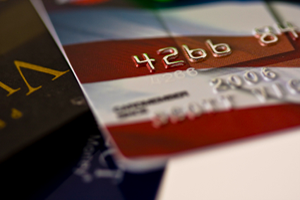Should You Worry About Contactless Credit Card NFC Skimming
If you have a contactless card, you might have worries about skimming. A contactless card or “frictionless” or “tap and go” is a card that has technology in it that allows payment over secure wireless like Apple Pay, Android Pay etc. Basically, this is where a criminal literally digitally pickpockets you by scanning things like your debit card or passport. What’s scary about this is that anyone can get an app for their phone that will allow them to skim. Is there protection for this? Maybe.
 But before you freak out, you probably don’t even have a contactless card. Very few cards deployed in the USA are contactless, so that sleeve you use doesn’t protect you from anything. Now if you are overseas or even in Canada, then look at your card and if there is a WiFi looking logo on there, you have contactless.
But before you freak out, you probably don’t even have a contactless card. Very few cards deployed in the USA are contactless, so that sleeve you use doesn’t protect you from anything. Now if you are overseas or even in Canada, then look at your card and if there is a WiFi looking logo on there, you have contactless.
The way that the bad guys skim this information is by using RFID, or radio-frequency identification. There are RFID signal jammers out there, but the question is this: do they work and are they necessary?
RFID Signal Blockers
If you put some time into it, you will find a number of RFID signal blockers on the market. Some of these are small and slip right into your wallet. Others are passport sized. There are also RFID signal blocker wallets on the market.
The Test
A blogger recently put these RFID signal blockers to the test…on the London Underground, one of the most crowded places in the world, especially during rush hour. He set up the test by asking one person to place a debit card in their pocket, and then another person used a mobile phone with an RFID signal scanner. The result was that the phone could scan and record the number on the debit card and the expiration date, simply by holding the phone really close to the pocket.
The blogger took the test a step further and tried to block these signals with RFID blocking technology. Even though the experiment was very unscientific, the blogger found that the blocker stopped the skimming.
Protecting Yourself
There are some things you can do to protect yourself from this. First, check your passport. It should have a chip in it. This chip is in all US passport that have been released since 2007. Now, someone can still take information from your passport using RFID skimming, but they have to actually be on the page where the photo is, and it’s pretty rare that they would have access to that.
You can also use a shielding device. They can certainly work, and some people have even found great results by using tinfoil. This will further help to protect your accounts.
Finally, even if you are using an RFID shielding device, make sure that you are checking your statements for anything suspicious. This is especially the case if you often find yourself in crowded places, like the subway.
Robert Siciliano personal security and identity theft expert and speaker is the author of Identity Theft Privacy: Security Protection and Fraud Prevention: Your Guide to Protecting Yourself from Identity Theft and Computer Fraud. See him knock’em dead in this Security Awareness Training video.

 Back in the day, we had one choice when we wanted to purchase something, and that was cold, hard cash. However, a few decades ago, people began using credit cards for everyday purchases instead of for only big ticket items, such as refrigerators. Though this was certainly convenient, it also opened the door for the bad guys to not only access your credit card information, they could use this information to make purchases and even to learn more about you and steal your identity. Over the past couple of years, once again, we in the U.S. are changing things up when it comes to how we use credit and debit cards. Our new cards, the ‘
Back in the day, we had one choice when we wanted to purchase something, and that was cold, hard cash. However, a few decades ago, people began using credit cards for everyday purchases instead of for only big ticket items, such as refrigerators. Though this was certainly convenient, it also opened the door for the bad guys to not only access your credit card information, they could use this information to make purchases and even to learn more about you and steal your identity. Over the past couple of years, once again, we in the U.S. are changing things up when it comes to how we use credit and debit cards. Our new cards, the ‘ Ten million credit cards were stolen by hackers, called Fin6, who may end up scoring $400 million. The cards were stolen from retail and hospitality businesses. If each card sells for $21 on secret carder shops, you can see how the hackers will rake in hundreds of millions of dollars.
Ten million credit cards were stolen by hackers, called Fin6, who may end up scoring $400 million. The cards were stolen from retail and hospitality businesses. If each card sells for $21 on secret carder shops, you can see how the hackers will rake in hundreds of millions of dollars.






























